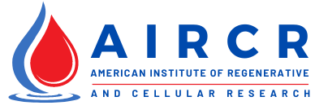Advanced or Later-Stage Symptoms Of Liver
-
Jaundice (Yellowing of Skin and Eyes):
A hallmark sign of liver dysfunction, caused by the buildup of bilirubin in the blood due to poor liver processing. -
Dark Urine:
Urine may appear tea-colored or brownish because of elevated bilirubin levels. -
Pale or Clay-Colored Stool:
A result of decreased bile flow into the digestive tract. -
Difficulty Digesting Fatty Foods:
Reduced bile production hampers fat digestion, often causing bloating, indigestion, or greasy stools. -
Unexplained Weight Loss:
Progressive loss of weight despite normal diet, due to poor nutrient absorption and metabolic inefficiency. -
Muscle Wasting (Loss of Muscle Mass):
The body begins breaking down muscle proteins for energy as liver function declines. -
Foul-Smelling Breath (Foetor Hepaticus):
A sweet, musty odor on the breath caused by volatile compounds that the liver fails to filter. -
Mental Confusion or Drowsiness (Hepatic Encephalopathy):
Accumulation of toxins in the brain may lead to forgetfulness, disorientation, or even coma in severe cases. -
Persistent Skin Itching (Pruritus):
Severe itching without visible rash, often due to bile salt accumulation under the skin. -
Nail Changes:
-
Spoon-Shaped Nails (Koilonychia): Concave nail surface often linked with iron deficiency in liver disease.
-
Terry’s Nails: Whitening of most of the nail bed with a narrow pink or brown band at the tip, indicating chronic liver disease.
-
Nail Clubbing: Thickening and rounding of the fingertips and nails, associated with long-term liver or lung disease.
-
-
Skin Manifestations:
-
Spider Angiomas: Tiny red spots resembling spider webs due to dilated blood vessels.
-
Xanthomas or Xanthelasmas: Small yellowish fatty deposits under the skin, especially around the eyelids, caused by altered fat metabolism.
-
-
Easy Bruising and Bleeding:
The liver’s inability to produce adequate clotting factors leads to frequent bruising and prolonged bleeding. -
Swollen Abdomen (Ascites):
Fluid accumulation in the abdominal cavity due to increased pressure in liver veins and protein imbalance. -
Swelling of Extremities (Edema):
Puffiness in the ankles, feet, hands, or face resulting from fluid retention and low albumin levels. -
Hormonal Imbalances:
-
In Females: Irregular menstrual cycles, reduced fertility, and hormonal disturbances.
-
In Males: Shrinking of the testicles (testicular atrophy) and development of enlarged breast tissue (gynecomastia) due to hormonal imbalance.
-
The most common liver conditions and their causes include:
- Hepatitis: Infections from the hepatitis B/C virus or autoimmune reactions.
- Fatty Liver Disease (NAFLD/MASLD): Excess fat deposits, linked to obesity or diabetes.
- Cirrhosis: Scarring from chronic inflammation and injury, often due to alcohol or hepatitis virus
- Liver Failure: Sudden or gradual loss of function requiring urgent care
